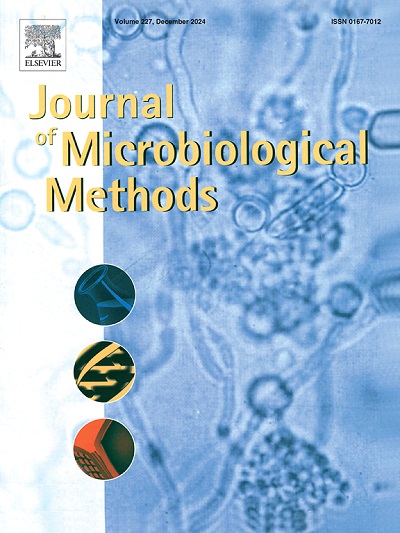Clinical microbiology and artificial intelligence: Different applications, challenges, and future prospects
IF 1.7
4区 生物学
Q4 BIOCHEMICAL RESEARCH METHODS
引用次数: 0
Abstract
Conventional clinical microbiological techniques are enhanced by the introduction of artificial intelligence (AI). Comprehensive data processing and analysis enabled the development of curated datasets that has been effectively used in training different AI algorithms. Recently, a number of machine learning (ML) and deep learning (DL) algorithms are developed and evaluated using diverse microbiological datasets. These datasets included spectral analysis (Raman and MALDI-TOF spectroscopy), microscopic images (Gram and acid fast stains), and genomic and protein sequences (whole genome sequencing (WGS) and protein data banks (PDBs)). The primary objective of these algorithms is to minimize the time, effort, and expenses linked to conventional analytical methods. Furthermore, AI algorithms are incorporated with quantitative structure-activity relationship (QSAR) models to predict novel antimicrobial agents that address the continuing surge of antimicrobial resistance. During the COVID-19 pandemic, AI algorithms played a crucial role in vaccine developments and the discovery of new antiviral agents, and introduced potential drug candidates via drug repurposing. However, despite their significant benefits, the implementation of AI encounters various challenges, including ethical considerations, the potential for bias, and errors related to data training. This review seeks to provide an overview of the most recent applications of artificial intelligence in clinical microbiology, with the intention of educating a wider audience of clinical practitioners regarding the current uses of machine learning algorithms and encouraging their implementation. Furthermore, it will discuss the challenges related to the incorporation of AI into clinical microbiology laboratories and examine future opportunities for AI within the realm of infectious disease epidemiology.
临床微生物学和人工智能:不同的应用、挑战和未来前景
人工智能(AI)的引入增强了传统的临床微生物学技术。全面的数据处理和分析使得精心策划的数据集得以开发,这些数据集已被有效地用于训练不同的人工智能算法。最近,使用不同的微生物数据集开发和评估了许多机器学习(ML)和深度学习(DL)算法。这些数据集包括光谱分析(拉曼光谱和MALDI-TOF光谱)、显微图像(革兰氏染色和抗酸染色)、基因组和蛋白质序列(全基因组测序(WGS)和蛋白质数据库(PDBs))。这些算法的主要目标是尽量减少与传统分析方法相关的时间、精力和费用。此外,人工智能算法与定量构效关系(QSAR)模型相结合,以预测解决持续激增的抗菌素耐药性的新型抗菌素。在2019冠状病毒病大流行期间,人工智能算法在疫苗开发和新抗病毒药物的发现中发挥了至关重要的作用,并通过药物再利用引入了潜在的候选药物。然而,尽管人工智能带来了巨大的好处,但它的实施也面临着各种挑战,包括道德考虑、潜在的偏见以及与数据训练相关的错误。本综述旨在概述人工智能在临床微生物学中的最新应用,旨在教育更多的临床从业者了解当前机器学习算法的使用并鼓励其实施。此外,它将讨论与将人工智能纳入临床微生物学实验室相关的挑战,并研究人工智能在传染病流行病学领域的未来机会。
本文章由计算机程序翻译,如有差异,请以英文原文为准。
求助全文
约1分钟内获得全文
求助全文
来源期刊

Journal of microbiological methods
生物-生化研究方法
CiteScore
4.30
自引率
4.50%
发文量
151
审稿时长
29 days
期刊介绍:
The Journal of Microbiological Methods publishes scholarly and original articles, notes and review articles. These articles must include novel and/or state-of-the-art methods, or significant improvements to existing methods. Novel and innovative applications of current methods that are validated and useful will also be published. JMM strives for scholarship, innovation and excellence. This demands scientific rigour, the best available methods and technologies, correctly replicated experiments/tests, the inclusion of proper controls, calibrations, and the correct statistical analysis. The presentation of the data must support the interpretation of the method/approach.
All aspects of microbiology are covered, except virology. These include agricultural microbiology, applied and environmental microbiology, bioassays, bioinformatics, biotechnology, biochemical microbiology, clinical microbiology, diagnostics, food monitoring and quality control microbiology, microbial genetics and genomics, geomicrobiology, microbiome methods regardless of habitat, high through-put sequencing methods and analysis, microbial pathogenesis and host responses, metabolomics, metagenomics, metaproteomics, microbial ecology and diversity, microbial physiology, microbial ultra-structure, microscopic and imaging methods, molecular microbiology, mycology, novel mathematical microbiology and modelling, parasitology, plant-microbe interactions, protein markers/profiles, proteomics, pyrosequencing, public health microbiology, radioisotopes applied to microbiology, robotics applied to microbiological methods,rumen microbiology, microbiological methods for space missions and extreme environments, sampling methods and samplers, soil and sediment microbiology, transcriptomics, veterinary microbiology, sero-diagnostics and typing/identification.
 求助内容:
求助内容: 应助结果提醒方式:
应助结果提醒方式:


